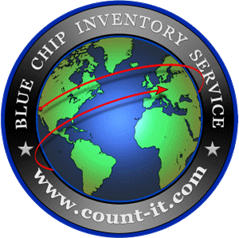
If you’re not yet familiar, the supply chain is made up of an interconnected network of businesses and departments that are involved with every step of the process of bringing a product to market. In other words, it involves everything from production and packaging to distribution, inventory and, finally, sales. A successful supply chain can dramatically improve profits for a business, but with such a complex and sometimes far-reaching process, it can be challenging. That is, unless you have the right strategy in place. Let’s examine some expert tips on optimizing the supply chain process.
Choose the Right Supply Chain Model – As with just about anything else in business, there is no one-size-fits-all to successful supply chain management. Some companies -such as those that compete primarily by price – are better suited for efficiency oriented models, while others may focus more on responsiveness. Figure out which model your business would work best under.
Leverage Automation – Manually keeping track of every step in the supply chain process is not only a massive task, but it’s also one that’s wrought with potential error. This is especially true for the inventory management piece of the puzzle. Using an automated inventory system will dramatically save time and reduce costly errors.
Implement Emerging Technologies – Things like mobile and cloud computing are revolutionizing the business world, and the supply chain is no exception. Make sure your business is taking advantage of these advanced technologies and using them to your fullest potential. For instance, providing access to every step of the supply chain process via tools like smartphones and other mobile devices keeps everyone in the loop.
Consider Outsourcing – Not every step in the supply chain process may make sense for your business, nor should you have to worry about handling it all in-house. Instead, identify which areas your company is best suited for and then focus on those areas while outsourcing the rest to a qualified third party. For instance, it might be a wiser investment to have your inventory serviceshandled by an outside resource.
Audit/Optimize Fixed Asset Usage – Your fixed assets are pieces of property that are used in the process of doing business and the production of income. For example, company vehicles, warehouse equipment and buildings are all considered fixed assets. To ensure the most efficient use of these assets, regular audits should be conducted to identify areas that could be tweaked for better results.
Successful supply chain management starts with a good plan. By implementing these key optimization tips, the process will go much more smoothly, which means a better bottom line for your business.


This calculator can help you determine the selling price for your products to achieve a desired profit margin. Try It Free >
Our Audit/Verification Service is available globally - from Thousand Oaks, CA to Timbuktu. Learn More >
Don't just take our word for it. Find out what our clients are saying about our services.
See actual testimonials >
From Retail and Gross Margin Inventory reports, to SKU and Price Verification reports, Blue Chip Inventory provides complete inventory service. See samples >






